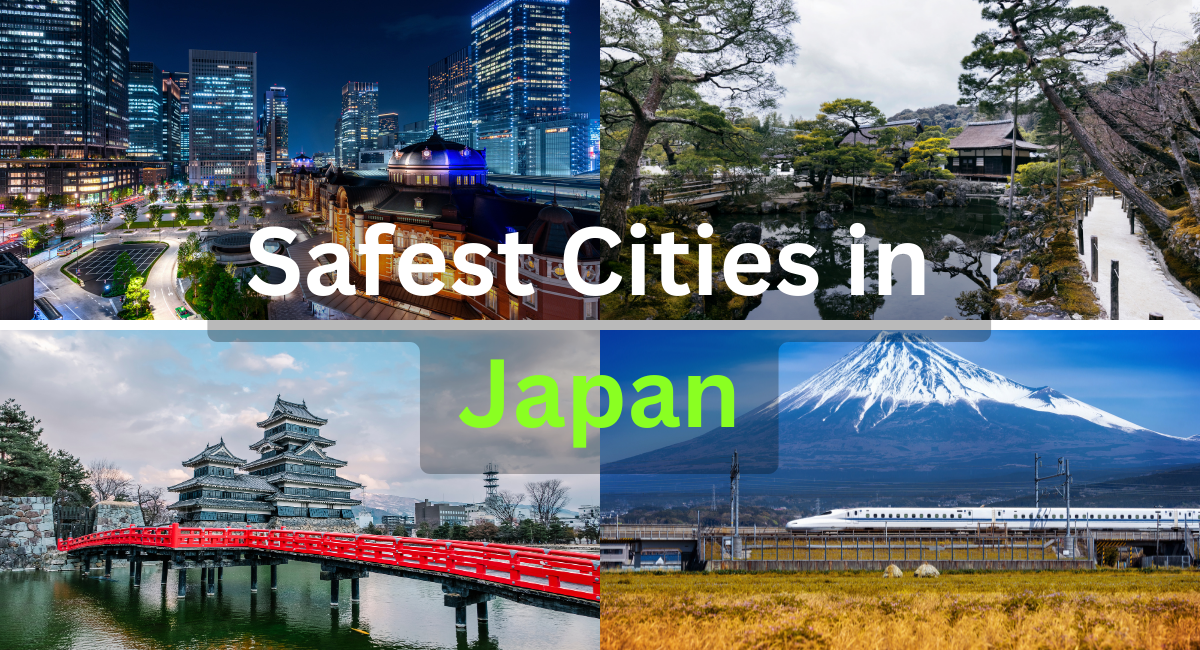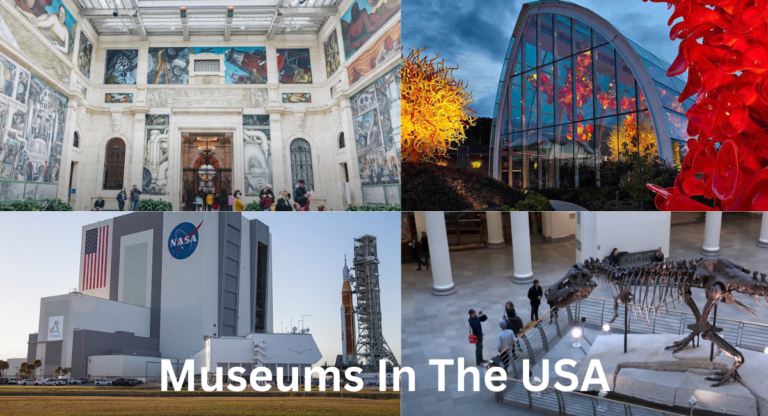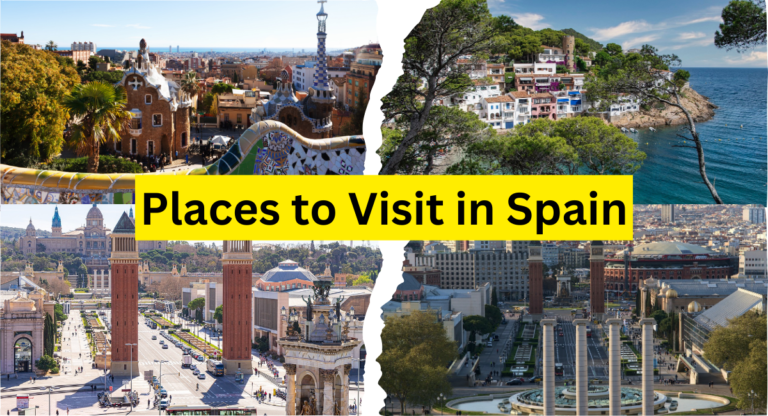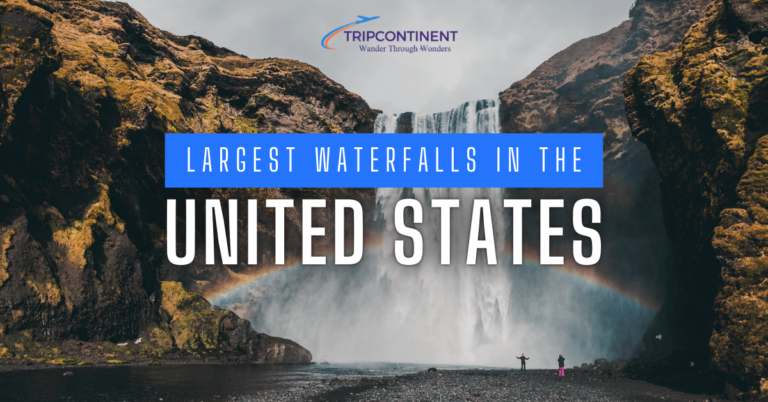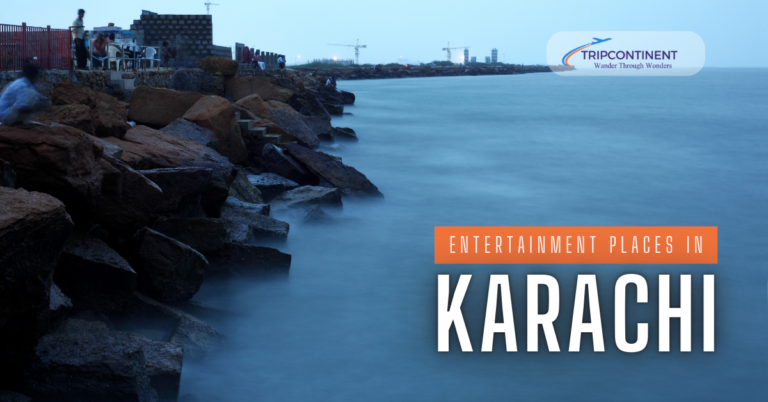10 Most Safest Cities in Japan That You Should Visit
Japan is globally renowned for its safety and security, consistently ranking among the safest countries in the world. This reputation extends to its cities, where residents and visitors alike enjoy a meager crime rate and a high standard of public safety measures. From bustling metropolises to serene rural towns, Japan’s commitment to safety permeates every aspect of daily life.
Japan’s effective law enforcement and justice systems are crucial in maintaining public safety. Local police are highly trained and responsive, ensuring swift action in emergencies and proactive crime prevention measures. The legal framework prioritizes public welfare, and strict enforcement of laws contributes to a low incidence of crime across the country.
Furthermore, Japan’s culture of respect for rules and social norms fosters a harmonious living environment. Visitors often remark on the cleanliness, orderliness, and politeness of Japanese cities, reflecting a broader cultural commitment to mutual respect and consideration.
Let’s explore the Safest Cities in Japan.
List of the Safest Cities in Japan
The following is the list of the Safest Cities in Japan.
- Tokyo
- Osaka
- Nara
- Nagoya
- Furano
- Betsukai
- Wakkanai
- Rishiri
- Okinawa
- Monbetsu
1. Tokyo
Tokyo, Japan’s bustling capital, is a city where ultramodern meets traditional. With a population of around 37 million people, it is one of the world’s most populous metropolitan areas.
Tokyo began as a small fishing village named Edo. In 1603, it became the seat of the Tokugawa shogunate, which led to its transformation into a sprawling urban center. By the mid-18th century, Edo was one of the largest cities in the world. In 1868, Emperor Meiji moved the capital from Kyoto to Edo, renaming it Tokyo, meaning “Eastern Capital.”
Tokyo is known for its impressive skyline, dominated by the iconic Tokyo Tower and the futuristic Tokyo Skytree. The city is divided into 23 special wards, each with its unique character. Shibuya is famous for its bustling crossing and youth culture, while Shinjuku is known for its skyscrapers and vibrant nightlife.
Tokyo has one of the lowest crime rates among major global cities. Violent crimes are rare, and petty crimes such as pickpocketing are infrequent.
The Tokyo Metropolitan Police Department is highly effective and visible, contributing to the city’s safety. Police boxes, known as “koban,” are strategically placed throughout the city. These small police stations serve as local bases where officers can assist with directions, lost property, and minor incidents, ensuring a sense of security and accessibility for the public.
Tokyo is prone to natural disasters, particularly earthquakes. However, the city is well-prepared with stringent building codes, regular disaster drills, and extensive public education on emergency procedures.
Advanced technology is integrated into Tokyo’s safety infrastructure. Surveillance cameras are widespread, and emergency services are equipped with modern communication and response tools, ensuring quick and efficient handling of incidents.
You might also like: 10 Most Expensive Countries in the World
2. Osaka
Osaka, Japan’s third-largest city, is a vibrant metropolis known for its modern architecture, delicious street food, and friendly residents. With a population of around 2.7 million, Osaka serves as a major economic hub and cultural center.
Osaka has a rich history dating back to the 5th century. It played a crucial role as Japan’s commercial capital during the Edo period and has been a key port city for centuries. The city’s historical landmarks, such as Osaka Castle, built in the 16th century, reflect its significant past.
Osaka is divided into two main areas: Kita (north) and Minami (south). Kita, centered around Umeda, is known for its business districts and shopping centers, while Minami, around Namba and Shinsaibashi, is famous for entertainment, dining, and nightlife. The city is also home to Universal Studios Japan, a major tourist attraction.
Like Tokyo, Osaka is one of the safest cities in the world. Crime rates are low, and the city is well-policed. Neighborhood watch programs and community involvement contribute to its safety. Public transportation is secure, and natural disaster preparedness is a priority, with robust infrastructure in place to handle earthquakes and other emergencies.
The lifestyle in Osaka is lively and friendly. Known for its outgoing and humorous residents, Osaka offers a warm and welcoming atmosphere.
Osaka benefits from active community policing and neighborhood watch programs. Residents often participate in patrols and safety campaigns, fostering a secure and vigilant environment.
3. Nara
Nara, located in the Kansai region of Japan, is a city steeped in history and culture. It was Japan’s first permanent capital, established in 710 AD, and is renowned for its well-preserved ancient temples, traditional neighborhoods, and natural beauty.
Nara served as the capital of Japan from 710 to 794 AD during the Nara period. This era was pivotal for the development of Japanese culture, arts, and Buddhism. Many of the city’s historical sites, such as Todai-ji Temple, Kofuku-ji Temple, and Kasuga Taisha Shrine, date back to this period and are designated UNESCO World Heritage Sites.
Nara is home to some of Japan’s most significant cultural treasures. The Todai-ji Temple houses the Great Buddha (Daibutsu), one of the largest bronze statues in the world. Nara Park, a vast public park, is famous for its friendly deer that roam freely and are considered sacred messengers of the gods.
Nara is one of the safest cities in Japan, with low crime rates and a peaceful atmosphere. The city’s focus on preserving its cultural heritage contributes to a strong sense of community and security. Public transportation and tourist areas are well-maintained and secure, ensuring a safe experience for both residents and visitors.
The lifestyle in Nara is serene and culturally rich. Residents enjoy a slower pace of life compared to larger cities like Tokyo and Osaka. The city is known for its traditional crafts, including Nara ink, calligraphy brushes, and pottery.
4. Nagoya
Nagoya, the fourth-largest city in Japan, is a dynamic and industrial hub located in the Chūbu region. With a population of approximately 2.3 million, it is known for its historical significance, cultural attractions, and economic importance.
Nagoya’s history dates back to the Edo period when it developed as a castle town under the Tokugawa shogunate. Nagoya Castle, built in 1612, is a prominent symbol of the city’s rich heritage. The town played a crucial role during Japan’s industrial revolution, becoming a center for automotive and manufacturing industries.
Nagoya is the capital of Aichi Prefecture and is strategically located between Tokyo and Osaka. It is home to major companies such as Toyota, contributing significantly to Japan’s economy. The city boasts several attractions, including the Atsuta Shrine, Osu Kannon Temple, and the SCMAGLEV and Railway Park.
Nagoya is one of Japan’s safest cities, with low crime rates and a strong emphasis on public safety. The city is well-policed, and community initiatives enhance security. Public transportation is safe and efficient, and the city’s infrastructure is designed to handle natural disasters, particularly earthquakes.
Nagoya’s public transportation system, including subways, buses, and trains, is known for its safety and reliability. Security measures such as surveillance cameras and police presence in stations and vehicles ensure a secure travel experience. Women-only cars are available during peak hours to protect female passengers.
Also explore: 10 Most Visited Cities in the World
5. Furano
Furano, located in the heart of Hokkaido, Japan’s northernmost island, is renowned for its stunning natural beauty, vibrant flower fields, and world-class ski resorts. With a population of about 20,000, it offers a serene and picturesque environment.
Furano’s development began in the late 19th century with the settlement of Japanese pioneers. The area grew as a center for agriculture, particularly for lavender cultivation, which has become one of Furano’s defining features. In recent decades, Furano has gained popularity as a tourist destination for both its summer flower fields and winter sports.
Furano is famously known for its expansive lavender fields, particularly at Farm Tomita, where visitors can enjoy the sight and fragrance of blooming lavender from mid-July to early August. The city is also a winter wonderland, with the Furano Ski Resort offering excellent skiing and snowboarding conditions from December to March.
Furano is an exceptionally safe place with very low crime rates. The community is close-knit, and residents take pride in maintaining a safe and welcoming environment for both locals and tourists. The local police are effective, and emergency services are readily accessible.
Furano, like the rest of Hokkaido, is less prone to major natural disasters compared to other parts of Japan. However, the city is well-prepared for potential emergencies with regular drills, well-constructed infrastructure, and clear evacuation plans.
6. Betsukai
Betsukai is a town located in eastern Hokkaido, Japan, known for its agricultural landscape, serene environment, and proximity to natural attractions. With a population of approximately 7,000 residents, it offers a quiet retreat amidst scenic countryside.
Betsukai has a history rooted in agriculture, particularly dairy farming and crop cultivation. The town’s name, Betsukai, means “place of wetland” in the Ainu language, highlighting its geographical features and cultural heritage. The area has been inhabited for centuries, with farming communities forming the backbone of local life.
Betsukai is celebrated for its expansive wetlands, which are home to diverse wildlife and bird species. The town is a haven for birdwatching enthusiasts, especially during the migratory seasons.
Life in Betsukai revolves around agriculture and the natural environment. Residents enjoy a peaceful, rural lifestyle, with activities centered on farming, fishing, and outdoor recreation. The town’s tranquil setting and scenic landscapes offer opportunities for hiking, cycling, and exploring nature. Betsukai is a very safe town, characterized by low crime rates and a tight-knit community.
Also read: 10 Richest Countries In Asia
7. Wakkanai
Wakkanai, located in the northernmost part of Hokkaido, Japan, is a serene city known for its pristine natural beauty and unique geographic significance. With a population of around 33,000, it serves as a gateway to the remote and scenic regions of northern Japan.
Wakkanai’s history is deeply connected to its geographical location. Originally inhabited by the indigenous Ainu people, it became a strategic location during the Meiji era for Japan’s northern defense and development. The city developed as a fishing and maritime center, with a history of trade and interaction with nearby Russia.
Wakkanai is a very safe city, characterized by low crime rates and a tight-knit community. The city’s small population and community-oriented lifestyle contribute to a secure and welcoming environment for both residents and visitors.
Life in Wakkanai is peaceful and closely connected to nature. The city’s residents enjoy outdoor activities such as hiking, fishing, and hot spring bathing. The harsh winters and abundant snowfall are embraced with winter sports and festivals.
8. Rishiri
Rishiri Island, part of the Rishiri-Rebun-Sarobetsu National Park, is a picturesque destination located off the northern coast of Hokkaido, Japan. Known for its stunning natural landscapes and outdoor activities, Rishiri Island offers a tranquil escape for nature lovers and adventure seekers.
Rishiri Island has a history intertwined with the indigenous Ainu people, who have lived on the island for centuries. The island’s name, Rishiri, means “high island” in the Ainu language, reflecting the dominant presence of Mount Rishiri, an extinct volcano that stands at 1,721 meters. The island has long been a hub for fishing and seaweed harvesting, particularly kombu, which is a significant local product.
Rishiri Island is renowned for its natural beauty, with Mount Rishiri being the centerpiece. The island’s rugged coastline, clear waters, and abundant flora and fauna make it a haven for hikers, cyclists, and nature enthusiasts.
Rishiri Island is extremely safe, with low crime rates and a tight-knit community. The island’s small population and focus on tourism contribute to a secure and welcoming environment. Local authorities and residents prioritize the safety and well-being of visitors.
Community involvement is key to safety on Rishiri Island. Residents actively participate in neighborhood watch programs and community events aimed at preserving the island’s natural beauty and safety. The local police work closely with the community to address safety concerns and promote public awareness.
9. Okinawa
Okinawa, a tropical paradise in southern Japan, is known for its stunning beaches, rich cultural heritage, and unique history. The Okinawa Prefecture consists of a group of islands, with the main island of Okinawa being the largest and most populated, home to around 1.4 million people.
Okinawa has a distinct history separate from mainland Japan. It was the center of the independent Ryukyu Kingdom from the 15th to the 19th century, known for its maritime trade and cultural exchange with China, Korea, and Southeast Asia. The kingdom was annexed by Japan in 1879. Okinawa suffered extensive damage during World War II, particularly during the Battle of Okinawa in 1945. After the war, it was under U.S. administration until 1972, when it was returned to Japan. This unique history has left a lasting impact on the culture and identity of Okinawa.
Okinawa is renowned for its beautiful beaches, coral reefs, and clear blue waters, making it a popular destination for snorkeling, diving, and beach tourism. Key attractions include Shuri Castle, a UNESCO World Heritage Site that reflects the island’s Ryukyu heritage, and the Okinawa Churaumi Aquarium, one of the largest aquariums in the world.
Okinawa is very safe, with low crime rates and a welcoming atmosphere. The local community and authorities are committed to maintaining a secure environment for both residents and visitors. Tourist areas, public transportation, and accommodation options are well-regulated to ensure safety.
10. Monbetsu
Monbetsu, located in northeastern Hokkaido, Japan, is a city known for its stunning winter landscapes, rich marine life, and vibrant fishing industry. With a population of around 23,000, it offers a blend of natural beauty and cultural attractions.
Monbetsu has a history rooted in the fishing industry, which has been the lifeblood of the local economy for centuries. The city’s name, Monbetsu, means “river mouth” in the Ainu language, reflecting its geographical and cultural heritage. Monbetsu developed as a key port town, facilitating trade and commerce in the region.
Monbetsu is famous for its drift ice, which flows down from the Sea of Okhotsk during the winter months. The city offers unique experiences like icebreaker cruises on the Garinko II, allowing visitors to witness the icy spectacle up close.
Monbetsu is a very safe city, characterized by low crime rates and a close-knit community. The local government and residents prioritize maintaining a secure environment for both locals and tourists. Public areas, transportation, and tourist attractions are well-regulated and monitored.
Conclusion
In conclusion, Safest Cities in Japan, bolstered by community engagement, effective law enforcement, technological advancements, and cultural values, make it among the most inviting in the world. Whether exploring vibrant urban centers or serene rural landscapes, visitors can enjoy Japan with confidence in their security.
FAQs
Where Do Most Foreigners Live in Japan?
In Japan, most foreigners tend to reside in major metropolitan areas and cities, particularly Tokyo, Osaka, and Nagoya. These cities attract expatriates and foreigners due to employment opportunities, international schools, diverse cultural experiences, and vibrant communities.
Which Part of Japan Has the Least Natural Disasters?
In Japan, the region with the least occurrence of natural disasters, particularly earthquakes and typhoons, is generally considered to be the northernmost island of Hokkaido. Compared to other parts of Japan, Hokkaido experiences fewer seismic activities and typhoons due to its geographical location and climate patterns.
Where Do the Richest Live in Japan?
In Japan, the wealthiest individuals and families often reside in affluent neighborhoods and districts of major cities such as Tokyo, Osaka, and Yokohama. These cities are home to high-end residential areas, luxury condominiums, and exclusive suburbs where the affluent tend to gravitate.
What City in the World Has the Lowest Crime Rate?
One of the cities often noted for having one of the lowest crime rates globally is Zurich, Switzerland. Zurich consistently ranks highly in safety and quality of life indexes due to its effective law enforcement, well-maintained public infrastructure, and low levels of violent crime and property crime.

I’m Sophia Jones, an adventurer at heart from New York City, USA. I live for travel and exploration, always eager to discover new places, meet fascinating people, and try out diverse cuisines. Over the past few years, I’ve traveled to numerous countries, immersing myself in different cultures and creating unforgettable memories.
